A Step By Step Guide to Analyzing Your PPC Campaigns

For effective PPC (pay-per-click) campaigns and reporting, you need two elements to wow your client:
- Systematic analysis of your campaign performance to show results and next steps
- Presenting your campaign performance in an actionable report
This guide’ll show you a step-by-step guide for analyzing your PPC strategy and using DashThis to structure and automate your reporting. Let’s get started!
Why analyze PPC campaigns?
PPC ads offer precise targeting, immediate results, and data-driven decisions based on campaign ROI (return on investment). It complements other longer-term marketing strategies like search engine optimization (SEO) and content marketing.
Crucially, watching your metrics like a hawk and taking action is even more critical today. As marketing budgets remain flat and cost efficiency decreases for PPC platforms like Google Ads, there’s more pressure for your PPC advertising to bring in revenue.
With regular PPC analysis, you can:
- Measure campaign efficiency: Monitor your budget spent versus actual conversions and sales
- Identify opportunities for improvement: Compare metrics like quality score, click-through rate (CTR) and conversions across individual ads and ad groups to make better bidding strategy decisions
- Make strategic decisions: Review your audience profile and take inspiration from your competitors to refine your campaign targeting
PPC analysis tips for beginners:
1. Have a clear goal and performance baseline for your campaign
Before you get into PPC analysis, know your numbers beforehand.
You need a baseline for analyzing your ad account's performance against. Without an objective view of your baselines, says Marc Thomas, Senior Growth Marketer at Podia, you’re forced to make guesswork based on industry benchmarks—which is a terrible way to grow as every company as every situation is different.
Instead, work out individual targets for each metric for your marketing strategy.
So if you’re running a PPC campaign to generate more leads for a new product landing page, set individual targets for your PPC KPIs. Consider setting goals for
- Target cost-per-click (CPC)
- Conversion rate
- Target close rate (for sales)
- Clicks per month needed to get you that close rate
Ensure these goals are aligned with your stakeholders. Get everyone in a room, including your client and any relevant stakeholders, to discuss and agree on your objectives.
Tip: Gauge widgets help visualize KPI's progress at a glance. You can adjust the upper and lower boundaries depending on your goal and metric. To find this widget in your DashThis dashboard, select Edit Widget > Layout.
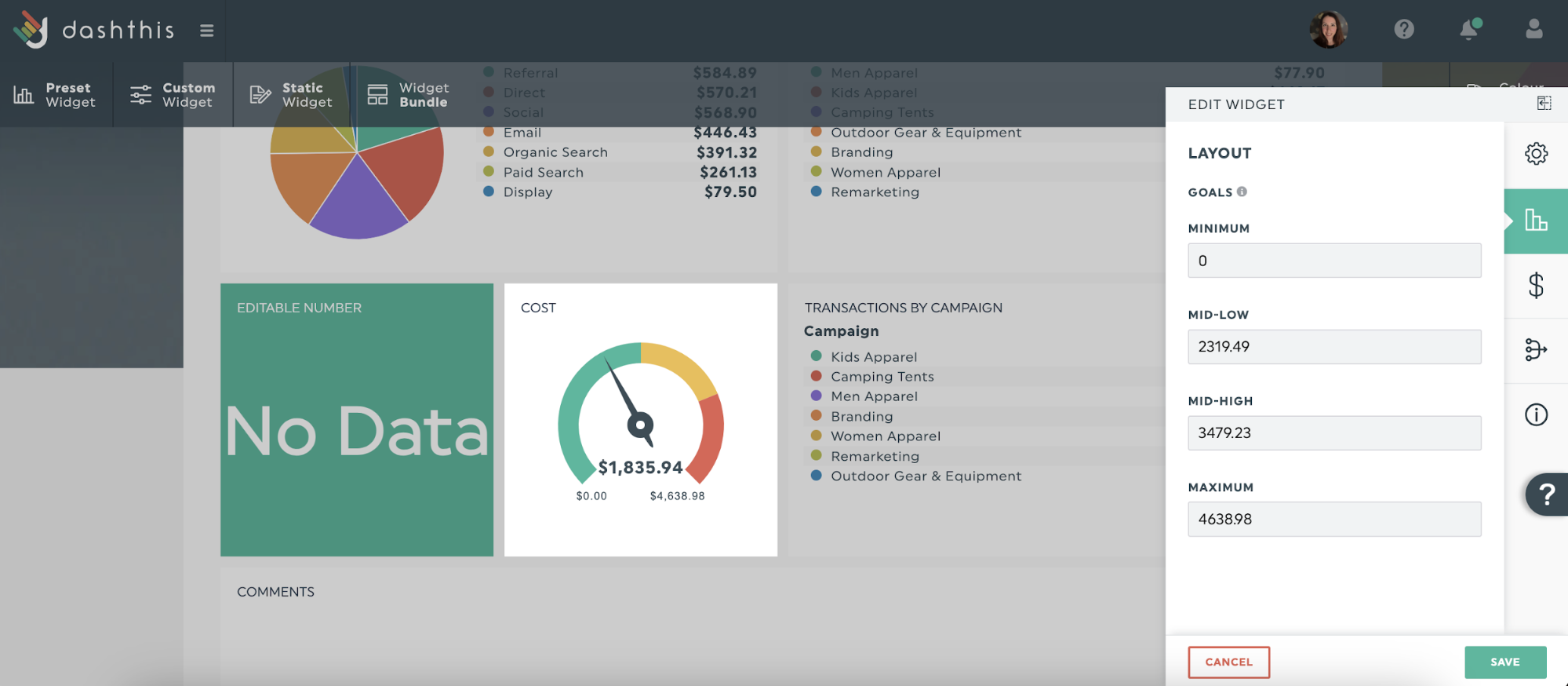
2. Know your target audience
While this point seems obvious (why wouldn’t you?), it’s worth considering how much you know about your customer profile.
Jules Foster, Director of Global Paid Social Marketing at Automation Anywhere, suggests reviewing your CRM data and answering these in-depth questions to zero in on your target customer profile.
- What industries are your best customers in?
- What job functions, seniority and company size are they in?
- What other content assets did they engage with on their journey with your brand?
To Jules, “answering these questions on a country-by-country basis will help prove or disprove misconceptions and preconceptions people might have about where your sweet spots are.” Going through these important steps minimizes budget wastage.
Google Analytics 4 user reports are another great place to inform your audience research.
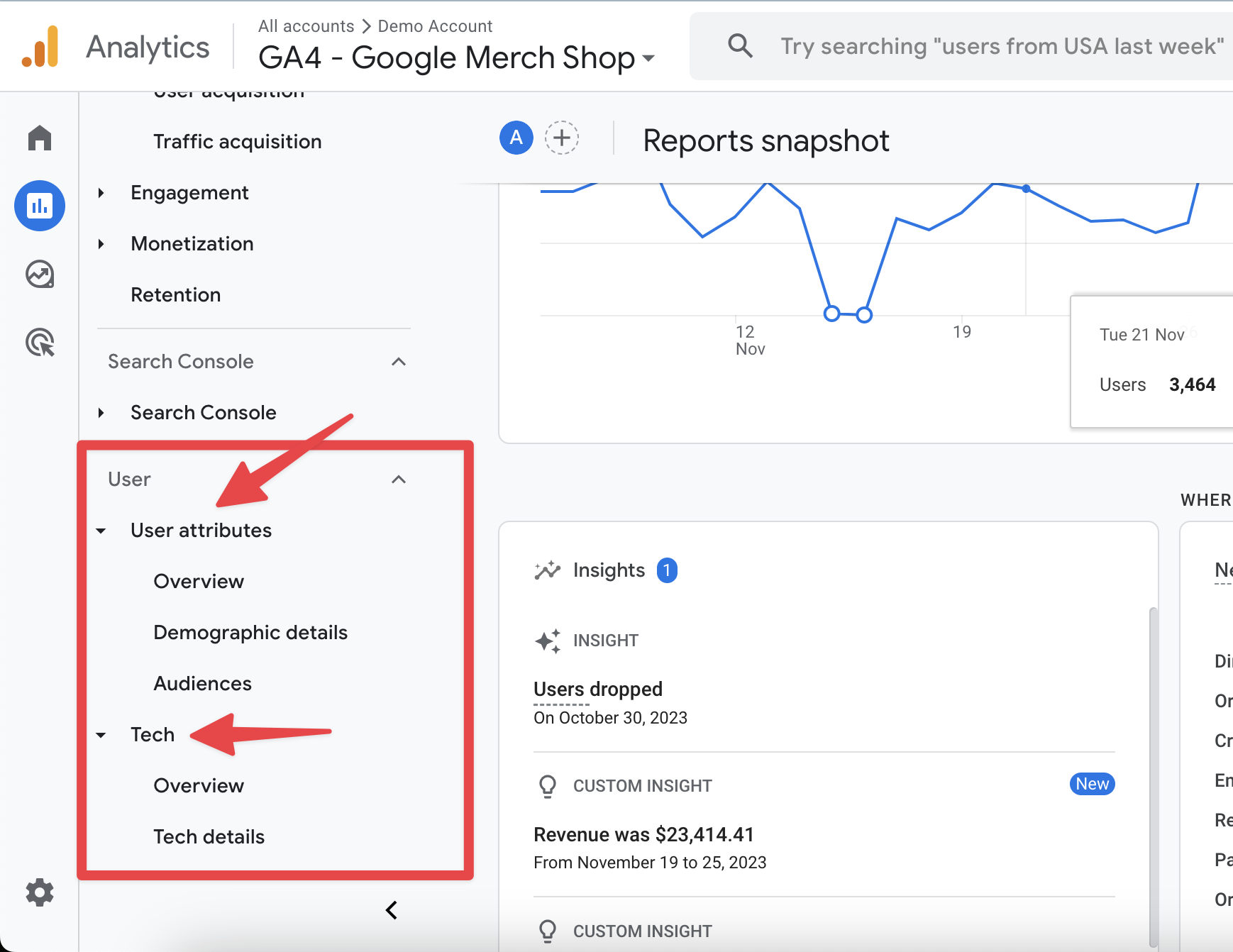
You can discover more information about your website visitors’s geographical location and the devices they use to find your website (and ads). More on our GA4 beginner’s guide.
3. Monitor ad spend
Clients want to know you’re spending their budget responsibly.
So take some time to monitor and report on these ad spend metrics:
- Daily budget
- Cost per click
- Cost per conversion
- Return on ad spend (ROAS)
4. Conduct A/B testing
A/B testing - or comparing two versions of ad text, landing page or creative to see which version performs better. It’s essential to be data driven as you optimize your ad campaigns.
A/B testing deserves its own in-depth guide, but here’s a few A/B testing tips from Sam Romain from digital marketing agency Romain Berg:
- Determine what specific metric to test for each ad. This will be your measure of success
- Test one variable at a time (e.g., headlines, call-to-actions (CTAs) and ad copy)
- Ensure the traffic you're testing on applies to your target audience.
- Test until you have a statistically relevant sample size
- Analyze results and take action
5. Set a regular reporting schedule.
Another thing to clarify with your clients is how often they expect reports. Do they want a weekly report or monthly report, for example?
Once it’s defined, stick to that frequency for easier comparison of metrics and analysis. Set regular reminders with your calendar or email tool to send your client their PPC analysis report.
Better yet, schedule an automatic email dispatch via DashThis to gain back hours of your time.
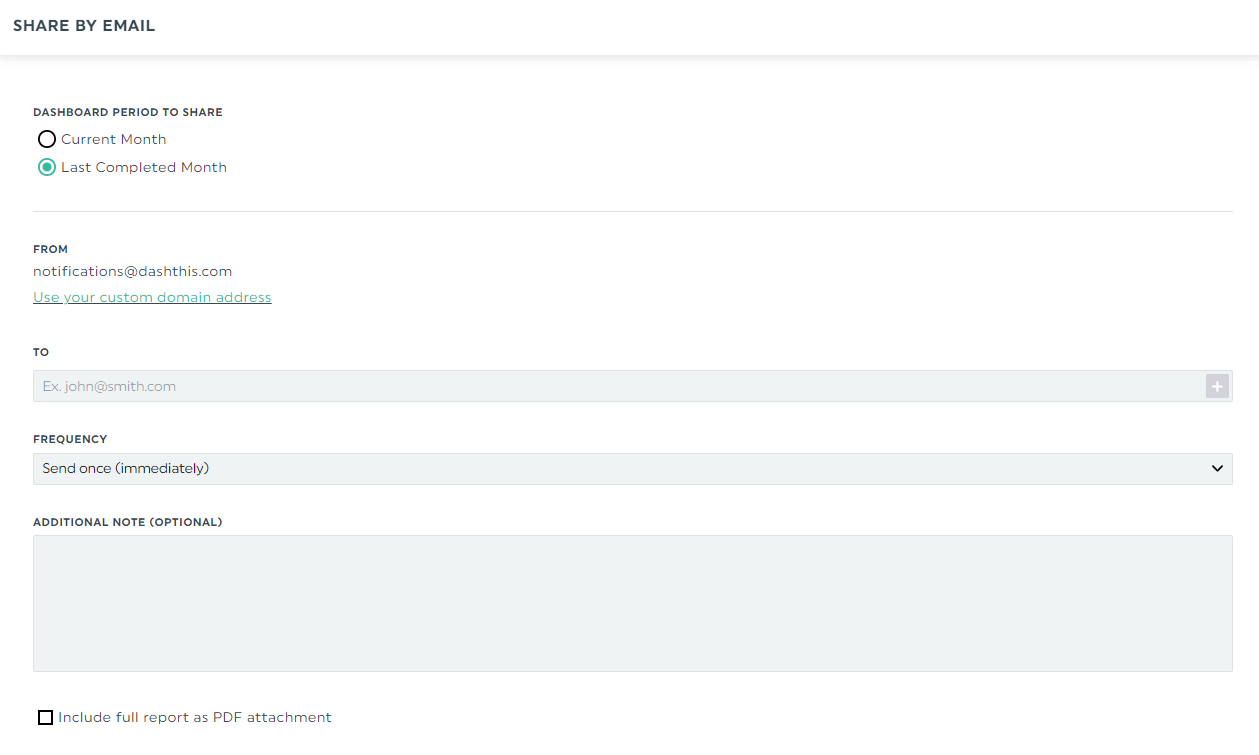
Click the Sharing Options icon > Share by Email and include relevant information. That way, you’ll automatically send a report on your preferred reporting frequency (e.g., weekly, biweekly, monthly).
Alternatively, send a shareable URL link for clients to view the report. Both sharing options let them view the report in real-time in different time periods.
How to analyze a PPC campaign - a step-by-step guide
1. Collect all your relevant PPC data for analysis:
Usually, you’ll need to export data from each platform manually.
One platform is easy-peasy. But today’s digital marketing efforts span multiple channels.
Imagine exporting, cleaning, analyzing and reporting data for multiple platforms across multiple clients.
It’s tedious and time-consuming. All these minor frustrations compound, affecting the quality of your client reporting, personal morale and more.
As a (much easier) alternative, tap on reporting software like DashThis to automate the tediousness away. DashThis integrates with Google Ads (formerly Google AdWords), Facebook Ads, Instagram Ads and other PPC analysis tools to get your PPC account data in one place.
You can also get competitor analysis data and analyze how your brand shows up on search engine results pages (SERPS) from SEMRush and Ahrefs in your dashboard.
2. Select your KPIs to analyze:

Tip: Use a bar chart in one widget to summarize your critical KPIs. Perfect for busy executives!
Which KPIs should you focus on to track the performance of your campaigns?
Some recommended starter ad metrics and what they mean:
Click-through Rate:

Are your ads compelling to interact with?
Conversions/ Conversion Rate:

Are people taking action on your ad destination?
Cost per Click (CPC):
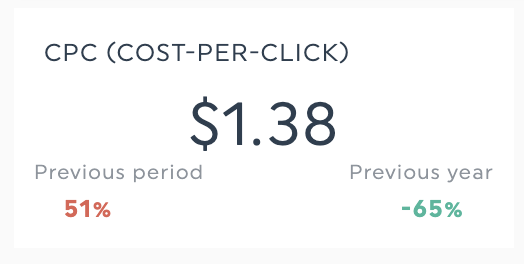
How much are you spending per click?
Return on Ad Spend (ROAS):
Are your ads driving business results relative to ad spend?
Quality Score:
How does your ad quality compare with other advertisers?
Ad Position:
How do your ads appear on a page relative to other ads?
Ad Impression Share:

Are your ads getting as many impressions as they could be?
Psst: Our PPC report template has all these KPIs in a nice dashboard for your reporting. Alternatively, check out our list of 100+ KPI examples for more inspiration.
3. Campaign segmentation for deeper insights:
Segmentation gives your data context, which makes your analysis more meaningful.
Segment your data by campaign, ad group, or PPC keyword and find where things need to improve.
For example, you can compare data across different segments (like comparing clicks across mobile or desktop devices), compare campaign KPIs over time, or eliminate audience segments that aren’t converting.
4. Competitor ad and competitor keyword analysis:
Looking at what your competitors do and what works for them is part and parcel of data-driven marketing.
But how do you get started? Here’s a quick guide.
First, what kind of competitors should you analyze?
Let’s say your client is a local business selling women’s clothes. Your competitors may look like this:
- Direct competitors: Other local businesses selling women’s clothes
- Indirect competitors: Department stores or online retailers selling women’s clothes
- Replacement competitors: Thrift shops
Next, review your competitors and what they’re doing with their PPC campaigns. Consider what they’re doing and what they aren’t doing.
A few specific places to start your competitor analysis:
- Specific keyword research: What keywords are they using? Are there any gaps to address?
- Ad copy creative: How are they framing their offers? What phrases are they using in their copy?
- Destination URLs: Where are your competitor's ads driving traffic? How are the landing pages structured?
- Offer analysis: What does their sales funnel look like? How does the messaging on their landing page compare to yours?
Look for ideas and patterns to see what your competitors are doing. Tools like SEMRush’s Domain Overview and Ahrefs Site Explorer (both of which DashThis integrates with!) come in handy to view the keywords your competitors target and paid search trends.
5. Speak to your sales team for feedback on improving your campaign:
This step doesn’t involve metrics, but it’s vital if you’re running a lead generation PPC campaign - talk to the people handling the leads from your campaign. e.g., your SDR team.
To Jules Foster, speaking to your SDR team gives you valuable opportunities to align the content of your PPC campaigns with what your leads want to see. “You've got to work really close with SDR and actually learn from their feedback. They're the guys that are talking to these people every single day and they're an absolute goldmine for information based on those conversations.“
According to HubSpot’s 2024 State of Sales report, only 59% of sales reps say leads from their marketing teams are high quality. A close feedback loop with your sales team addresses this gap while closing more deals. Sounds like a win-win!
How to use DashThis to make your PPC analysis more efficient
Get started with DashThis in 4 steps:
- Sign up for your 15-day free trial here
- Connect your data sources
Say goodbye to manual exports and headaches. DashThis integrates multiple PPC tools like TikTok Ads, LinkedIn, Google Ads and more to help you get all your data in one place.
Plus, integrate your SEMRush and Ahrefs tools to gain valuable competitor analysis data in one place.
Once you’ve connected your paid advertising tools to DashThis, click on Create Dashboard.

- Build your report
Use our report templates to get started quickly with key metrics or customize the dashboard with our preset widgets.
DashThis has multiple data visualization options to speed up comprehension. Visualise conversion rate, quality score or ROI trends with line and column graphs, or use a bar chart to track multiple KPIs over time to visualize individual segments of an aggregate metric.

4. Schedule it!
Finally, after all the work you’ve put in, don’t forget to send off your report!
Set up DashThis to deliver your report every week or month simultaneously. You won't have to worry about forgetting to send your report again.

DashThis offers multiple PPC report-sharing options, like
- Automated email dispatch
- A URL link to the report for clients to view online in real-time, perfect for client review meetings
- Export the report as a PDF to attach to your email or to upload to a client folder.
A KPI dashboard example for PPC campaigns
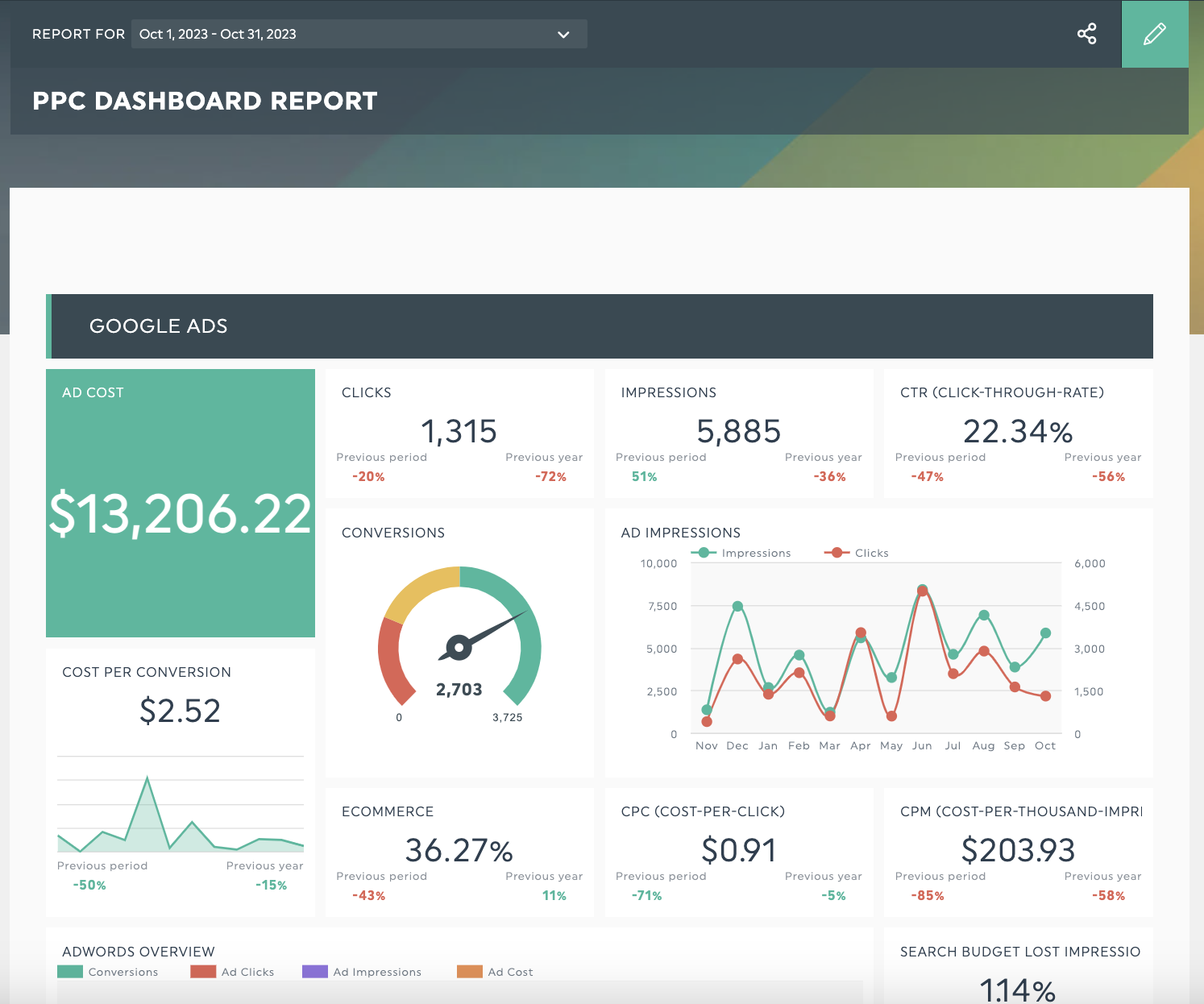
Get this PPC campaign with your own data!
Make your PPC reporting and analysis more manageable with a dashboard!
DashThis's PPC campaign reports include commonly used KPIs to help you save time on putting reports together and focus on analysis - no Excel spreadsheets or coding know-how needed.
All you need to do is sign up for a DashThis account (we’ve got a 15-day trial to try us out!) and connect your paid marketing tools, and you’re all set to wow your clients with your actionable PPC analysis.
Automate your PPC reporting with DashThis
PPC analysis allows your agency to show your expertise and skills through actionable client reporting.
But reporting takes valuable hours - time that can go into developing actionable recommendations and growing your clients' businesses.
Why choose hassle when you can choose a simple, fuss-free approach?
Automate the report creation process and save 20+ hours a month on client reporting. Get your 15-day trial of DashThis today.
Ready to perform a PPC analysis?
Read More
Don’t miss out!
Automate your reports!
Bring all your marketing data into one automated report.
Try dashthis for free

